Home>Storage Ideas>Kitchen Storage>How To Make A Kitchen More Relaxing: 12 Designer Tips
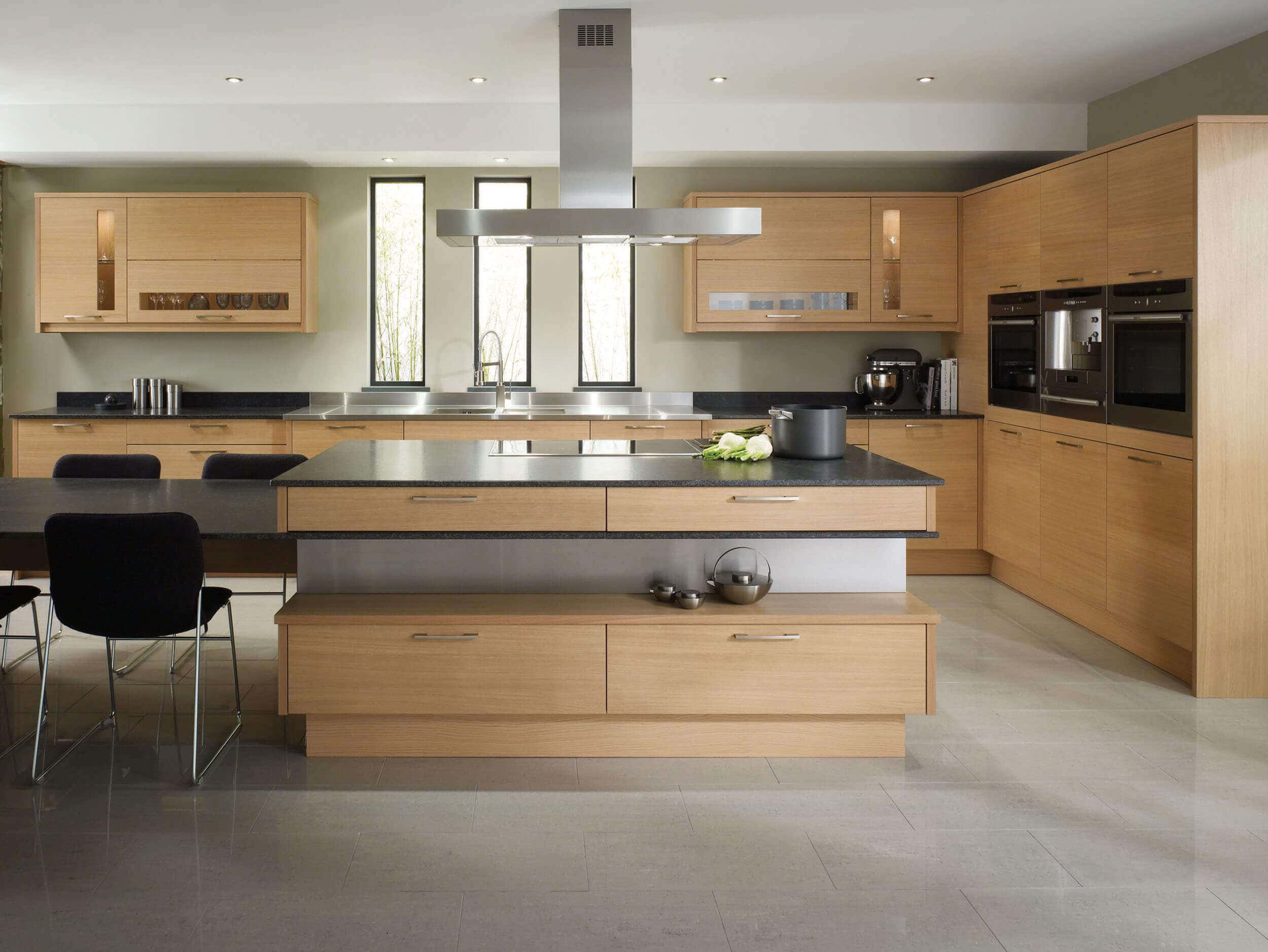

Kitchen Storage
How To Make A Kitchen More Relaxing: 12 Designer Tips
Modified: January 6, 2024
Discover 12 designer tips to transform your kitchen into a tranquil oasis with these kitchen storage ideas. Create a relaxing environment while maximizing space efficiency.
(Many of the links in this article redirect to a specific reviewed product. Your purchase of these products through affiliate links helps to generate commission for Storables.com, at no extra cost. Learn more)
Introduction
Welcome to the world of kitchen storage ideas! The kitchen is the heart of any home, but it can easily become a cluttered and chaotic space. As a kitchen storage expert, I’m here to help you transform your kitchen into a relaxing and organized oasis.
A well-designed kitchen not only enhances functionality but also creates a serene ambiance that makes cooking and meal prep a pleasurable experience. By utilizing effective storage solutions, incorporating soothing elements, and adopting a minimalist approach, you can achieve a truly tranquil and inviting kitchen environment.
In this article, I will share 12 designer tips to make your kitchen more relaxing and enjoyable. Whether you’re renovating your kitchen from scratch or looking for simple ways to revamp your existing space, these ideas will help you create a stylish and serene sanctuary.
Key Takeaways:
- Create a serene kitchen oasis by incorporating calming colors, natural materials, and maximizing natural light. Reduce clutter, add cozy seating, and introduce plants for a tranquil and inviting space.
- Embrace a minimalist design, utilize scented candles, and incorporate soothing artwork to enhance the ambiance. Maximize storage, add soft textures, and prioritize relaxation for a calming and enjoyable kitchen environment.
Use calming colors
The colors you choose for your kitchen can have a significant impact on its overall mood and atmosphere. To create a relaxing environment, opt for calming colors such as soft neutrals, cool blues, gentle greens, or earthy tones.
Neutrals, such as whites, creams, and light grays, provide a timeless and serene base for any kitchen. These colors create a sense of openness and tranquility, making the space feel calm and inviting. Consider using neutral colors for the walls, cabinets, and countertops.
For a touch of vibrancy, consider incorporating cool blues or gentle greens into your kitchen’s color scheme. These colors are known for their soothing qualities and can evoke a sense of tranquility and relaxation. You can use these colors for accents like backsplashes, kitchen accessories, or even as a statement color for your island or dining area.
Incorporating earthy tones, such as warm browns and soft beiges, can also help create a calming and grounding effect in the kitchen. These colors bring a sense of nature and harmony, promoting a serene atmosphere. You can introduce earthy tones through wooden elements, such as flooring, cabinetry, or even a reclaimed wood feature wall.
Remember, the key is to choose colors that resonate with you personally and create a sense of calm. Experiment with different palettes and shades to find the perfect balance that suits your taste and promotes relaxation in your kitchen.
Incorporate natural materials
Incorporating natural materials into your kitchen design not only adds a touch of beauty but also brings a sense of serenity and harmony to the space. By utilizing materials such as wood, stone, and natural fibers, you can create a warm and inviting atmosphere.
When it comes to kitchen cabinetry, opt for solid wood or wood veneer finishes. These not only lend a natural and organic feel to the space but also have a timeless appeal. Natural wood grain adds warmth and texture, creating a soothing environment.
For countertops, consider using natural stones like granite or marble. These materials not only add elegance and sophistication but also provide a connection to the natural world. The unique patterns and colors found in natural stone have a calming effect and can contribute to a serene kitchen design.
Incorporating natural fibers into your kitchen can also enhance the sense of relaxation. Consider using materials like bamboo or rattan for bar stools, pendant lights, or kitchen accessories. These materials bring a touch of nature indoors and evoke a peaceful ambiance.
Another way to incorporate natural materials is through the flooring. Hardwood floors are not only beautiful but also durable and easy to maintain. They add warmth and a sense of grounding to the kitchen, creating a relaxing atmosphere.
By incorporating natural materials into your kitchen design, you can create a space that feels connected to the outdoors, promoting a sense of calm and tranquility. Remember to balance the use of different materials to achieve a cohesive and harmonious look.
Increase natural light
Natural light can have a remarkable impact on the overall ambiance of a space, including the kitchen. Maximizing natural light not only creates a bright and airy atmosphere but also has numerous benefits for your well-being and mood.
If your kitchen has windows, make sure to keep them unobstructed to allow as much light as possible to filter in. Avoid heavy curtains or blinds that block sunlight. Instead, opt for sheer or light-colored window treatments that let in natural light while still providing privacy when needed.
If your kitchen lacks natural light or doesn’t have many windows, there are several ways you can increase it. Consider installing a skylight or solar tube to bring in more sunlight from above. These can be especially beneficial in windowless kitchens or in areas with limited exterior wall space.
In addition to maximizing natural light, it’s essential to complement it with artificial lighting that mimics daylight. Utilize a combination of ambient, task, and accent lighting to create a well-lit and inviting kitchen environment. LED lights with a color temperature of 5000-6500K closely resemble natural daylight and can create a soothing and energizing atmosphere.
Remember to position your lighting strategically to avoid casting harsh shadows or glares. Installing lights under cabinets, above the sink, and in work areas will ensure that you have sufficient illumination for cooking and meal prep tasks.
Increasing natural light in your kitchen not only enhances the overall aesthetics but also contributes to a more relaxing and pleasant environment. The presence of natural light has been linked to improved mood, increased productivity, and a greater sense of well-being, making it a vital element in creating a serene kitchen.
Reduce clutter
A cluttered kitchen can make it challenging to relax and enjoy your time in the space. By decluttering and organizing your kitchen, you can create a more serene and peaceful environment. Here are a few tips to help you reduce clutter in your kitchen:
1. Purge unnecessary items: Start by going through your kitchen and getting rid of any items that you no longer use or need. This includes old appliances, utensils, and expired food items. Only keep essential items that you use regularly.
2. Organize your cabinets and drawers: Invest in storage solutions such as drawer dividers, cabinet organizers, and spice racks to keep everything in its place. Group similar items together and assign specific areas for different categories, such as baking supplies, cookware, and pantry items.
3. Clear off countertops: Keep your countertops free of unnecessary clutter by storing small appliances, utensils, and other items in cabinets or drawers. Having clean, clear surfaces will create a more open and calming atmosphere in your kitchen.
4. Create designated storage zones: Designate specific storage zones for different purposes in your kitchen. For example, have a dedicated area for cutting boards, knives, and cooking utensils. This will make it easier to find what you need and keep everything organized.
5. Utilize vertical space: Make use of vertical space in your kitchen by installing hooks or racks for hanging pots, pans, and cooking utensils. This not only frees up cabinet space but also adds visual interest to the kitchen.
6. Adopt a “one in, one out” approach: To maintain a clutter-free kitchen, make it a rule to get rid of one item whenever you bring in something new. This will help prevent unnecessary accumulation of items over time.
By reducing clutter in your kitchen, you create a more peaceful and organized environment that allows you to fully enjoy your time in the space. The less visual noise and chaos, the easier it is to relax and focus on cooking and preparing meals.
Read more: How Can I Make My Bedroom Look More Modern?
Create a cozy seating area
A cozy seating area in your kitchen can serve as a relaxing spot to enjoy a cup of coffee, read a book, or simply unwind after a long day. It adds warmth and comfort to the space, making it more inviting and enjoyable. Here are some ideas to create a cozy seating area in your kitchen:
1. Choose comfortable seating: Select chairs or stools that are both stylish and comfortable. Look for padded seats, supportive backs, and ergonomic designs. Consider materials like upholstered chairs or cushioned stools to enhance comfort.
2. Add soft furnishings: Incorporate soft furnishings such as throw pillows, cushions, and cozy blankets to create an inviting atmosphere. Choose fabrics that are plush and tactile, such as velvet or faux fur, to add a touch of luxury and coziness.
3. Create a reading nook: If you have enough space, consider dedicating a corner of your kitchen to a reading nook. Install a cozy armchair or a small loveseat along with a side table and a bookshelf filled with your favorite reads. This creates a serene and peaceful spot to relax and escape into a good book.
4. Incorporate natural elements: Bring the outdoors in by adding natural elements to your seating area. Place potted plants or fresh flowers on the table or windowsill to introduce a sense of nature and tranquility. The presence of greenery can have a calming effect on the mind.
5. Consider a kitchen island with built-in seating: If you have the space, a kitchen island with built-in seating can provide a cozy and communal gathering spot. This not only adds functionality to your kitchen but also creates a casual and welcoming atmosphere for dining, socializing, or even homework sessions.
6. Install soft lighting: The right lighting can contribute to the cozy ambiance of your seating area. Install a dimmable pendant light or a table lamp to create a soft and inviting glow. Adjustable lighting allows you to control the intensity and set the mood for relaxation.
7. Personalize with decorations: Add personal touches to your seating area with artwork, photographs, or decorative accessories. These can reflect your taste and personality while adding a cozy and familiar vibe.
By creating a cozy seating area in your kitchen, you provide a designated space for relaxation and unwinding. Whether you use it for morning coffee or as a place to gather with friends and family, a cozy seating area adds a touch of comfort and warmth to your kitchen environment.
Add plants for a touch of nature
Bringing plants into your kitchen is an excellent way to introduce a touch of nature and create a calming and inviting atmosphere. Not only do plants add visual appeal, but they also offer numerous health benefits, such as improving air quality and reducing stress levels. Here are some tips for incorporating plants into your kitchen:
1. Choose the right plants: Select houseplants that thrive in the kitchen environment. Look for plants that can tolerate the natural light conditions in your kitchen and don’t require excessive watering or maintenance. Some popular choices for kitchen plants include herbs like basil, mint, and rosemary, as well as low-maintenance options such as succulents and pothos.
2. Display plants in appropriate containers: Use pots, planters, or hanging baskets that complement your kitchen’s style and color scheme. Consider using natural materials like clay or terracotta pots, or choose decorative containers that add a pop of color or texture to the space.
3. Place plants strategically: Position plants on windowsills, countertops, or floating shelves to maximize their visual impact and benefit from natural light. You can also hang plants from the ceiling or install a vertical garden for a unique and space-saving display.
4. Create an herb garden: Cultivate an indoor herb garden by planting your favorite herbs in small pots or a window planter. Having fresh herbs readily available not only adds a pleasant aroma but also provides a convenient source of ingredients for your cooking.
5. Maintain proper care: Ensure that you understand the specific needs of each plant and provide adequate care. Water your plants regularly, but be mindful not to overwater as it can lead to root rot. Additionally, dust the leaves periodically to keep them clean and promote healthy growth.
6. Consider artificial plants: If you don’t have a green thumb or your kitchen lacks natural light, you can still enjoy the benefits of greenery by incorporating artificial plants. There are many realistic-looking options available that require no maintenance and can still bring a sense of nature into your kitchen.
7. Mix and match plant sizes and textures: Experiment with different plant sizes, shapes, and textures to create an aesthetically pleasing display. Layering plants of varying heights and leaf shapes adds visual interest and depth to your kitchen space.
Adding plants to your kitchen not only enhances the visual appeal but also contributes to a relaxed and natural ambiance. The presence of greenery creates a connection to the outdoors and brings a sense of peace and tranquility to your cooking and dining experience.
Consider adding soft, ambient lighting to create a relaxing atmosphere in the kitchen. This can be achieved with under cabinet lighting, pendant lights, or dimmable fixtures.
Install dimmer lights for ambiance
Creating the right ambiance in your kitchen is essential for a calming and relaxing atmosphere. One way to easily achieve this is by installing dimmer lights. Dimmer lights allow you to adjust the brightness and intensity of the lighting, enabling you to create the perfect mood for any occasion. Here’s how you can use dimmer lights to enhance the ambiance in your kitchen:
1. Set the mood: Dimmer lights give you the flexibility to set the mood in your kitchen. Whether you’re having a romantic dinner, hosting a gathering, or simply want a softer glow while enjoying a cup of tea, dimming the lights helps create a warm and inviting ambiance.
2. Highlight focal points: With dimmer lights, you can draw attention to specific areas or elements in your kitchen. For example, you can dim the general lighting and focus on accent lighting to highlight a beautiful backsplash, a decorative shelf, or a piece of artwork. This creates a focal point and adds a touch of elegance to your kitchen.
3. Enhance visual interest: Adjusting the lighting level with dimmers can help enhance the visual interest in your kitchen. By highlighting certain areas and casting shadows in others, you can add depth and dimension to the space. This can make your kitchen feel cozier and more atmospheric.
4. Create a functional lighting scheme: Dimmer lights allow you to have versatile lighting options in the kitchen. For tasks such as food prep and cooking, you can have bright and focused lighting by keeping the dimmer switch at a higher setting. When it’s time to sit down and enjoy a meal, you can dim the lights to create a more relaxed dining experience.
5. Improve energy efficiency: Dimmer lights are not only great for ambiance but also for energy efficiency. By adjusting the brightness according to your needs, you can reduce energy consumption and extend the life of your light bulbs. This is not only eco-friendly but can also save you money on your energy bills.
6. Consider color temperature: When selecting dimmer lights, pay attention to the color temperature of the bulbs. Cooler temperatures (around 5000-6500K) are energizing and ideal for task lighting, while warmer temperatures (around 2500-3000K) create a cozy and relaxing atmosphere for ambient lighting.
7. Consult a professional electrician: If you’re not familiar with electrical work, it’s best to consult a professional electrician for the installation of dimmer lights. They can ensure that the wiring and switches are properly installed and compatible with dimming functionality.
By installing dimmer lights in your kitchen, you have the power to control the lighting levels and create a soothing ambiance that suits your mood and activities. It’s a simple yet effective way to enhance the overall atmosphere and make your kitchen a more relaxing and enjoyable space.
Utilize scented candles or aromatherapy
Creating a relaxing and soothing atmosphere in your kitchen goes beyond just visual elements. The sense of smell plays a significant role in setting the mood and evoking feelings of comfort and calm. Utilizing scented candles or aromatherapy can add a delightful and therapeutic touch to your kitchen. Here’s how you can incorporate scents into your kitchen:
1. Choose calming scents: Opt for scents that promote relaxation and tranquility. Lavender, chamomile, vanilla, and eucalyptus are popular choices known for their calming properties. These scents can help reduce stress, anxiety, and create a serene atmosphere in your kitchen.
2. Place scented candles strategically: Scented candles not only provide a pleasant aroma but also add a cozy and intimate ambiance to your kitchen. Place them on countertops, tables, or shelves to spread the scent throughout the space. Be mindful of safety and never leave burning candles unattended.
3. Use essential oil diffusers: Essential oil diffusers are an effective way to introduce aromatherapy into your kitchen. Add a few drops of your favorite essential oils to the diffuser, and let it disperse the scent throughout the room. This method is safe and does not require an open flame.
4. Experiment with scented herbs: Some herbs, such as basil, mint, or lemon balm, release natural scents when crushed or brushed against. Display herb pots in your kitchen near your cooking area or seating area, allowing their delightful fragrance to waft through the air.
5. Choose natural and high-quality products: When selecting scented candles or essential oils, opt for natural and high-quality options. Look for candles made from soy wax or beeswax, as they burn cleaner and release fewer toxins into the air. Choose pure essential oils without synthetic fragrances for the best aromatherapy experience.
6. Consider seasonal scents: Switch up your scents according to the seasons to create a harmonious and festive atmosphere. Fresh citrus scents like orange and grapefruit are invigorating and perfect for spring and summer, while warm and spicy scents like cinnamon or cloves evoke coziness during fall and winter.
7. Experiment with scent combinations: Get creative and experiment with combining different scents to create a unique and personalized aroma. Mix calming scents like lavender with uplifting scents like bergamot or ylang-ylang for a well-rounded and soothing ambiance.
Introducing scented candles or aromatherapy into your kitchen adds an additional layer of sensory delight, enhancing the overall relaxing ambiance and creating a fragrant haven. Just be mindful of any sensitivities or allergies when selecting scents, and enjoy the soothing effects of aromas in your kitchen.
Introduce soothing artwork
Art has the power to evoke emotion and create a calming atmosphere in any space, including your kitchen. Introducing soothing artwork can enhance the visual appeal of your kitchen while providing a sense of tranquility. Here are some ideas for incorporating soothing artwork in your kitchen:
1. Choose serene subjects: Look for artwork that features serene subjects such as nature, landscapes, seascapes, or abstract designs that evoke a sense of calm. Soft colors, gentle brushstrokes, and flowing images can contribute to a serene and peaceful ambiance in your kitchen.
2. Consider nature-inspired art: Artwork that incorporates elements of nature like trees, flowers, or landscapes can create a soothing and organic atmosphere. Botanical prints, watercolor nature scenes, or photographs of calming environments can bring a touch of the outdoors into your kitchen.
3. Opt for minimalist art: Minimalist artwork with its clean lines, neutral colors, and simplicity can create a serene and uncluttered aesthetic. Choose pieces that focus on a single subject or have a balanced and harmonious composition, allowing the mind to relax and find a sense of calm in its simplicity.
4. Use abstract art: Abstract art can be a powerful way to evoke emotions and create a calming effect. Select abstract pieces that feature soft color palettes, organic shapes, or soothing patterns. These works of art can inspire contemplation and relaxation in your kitchen space.
5. Create a gallery wall: Consider creating a gallery wall in your kitchen featuring a collection of soothing artwork. Grouping multiple pieces together can add visual interest and serve as a focal point. Choose artwork that complements each other in terms of color palette or theme, creating a cohesive and relaxing display.
6. Use calming photography: Photography can capture the beauty and tranquility of the world around us. Incorporate calming photographs of landscapes, seascapes, or even food-related imagery into your kitchen. Images that evoke a sense of peace and serenity can have a calming effect on the atmosphere.
7. DIY artwork: Consider creating your own soothing artwork for a personalized touch. Experiment with acrylic paints, watercolors, or mixed media to create abstract or nature-inspired pieces. Displaying your own artwork can bring a sense of pride and relaxation to your kitchen.
Introducing soothing artwork in your kitchen adds a visual element that promotes relaxation and tranquility. Whether you choose serene nature scenes, minimalist designs, or abstract art, the right artwork can transform your kitchen into a calming and inspiring space.
Maximize storage space
Having sufficient storage space in your kitchen is essential for maintaining a relaxing and organized environment. Clutter and disorganization can create a stressful atmosphere, so it’s important to maximize storage space to keep everything neat and within reach. Here are some tips to help you make the most of your kitchen’s storage potential:
1. Utilize vertical space: Take advantage of vertical space by installing wall-mounted shelves, racks, or hooks. These can be used to store and display items such as cookbooks, pots and pans, utensils, or even decorative pieces. Vertical storage not only saves valuable countertop or cabinet space but also adds visual interest to your kitchen.
2. Invest in cabinet organizers: To make the most of your cabinet space, invest in organizers such as pull-out shelves, stacking shelves, or drawer dividers. These organizers help maximize storage and make it easier to find and access items. Consider using clear bins or labeled containers to further organize and separate items.
3. Optimize corner space: Corners in your kitchen can often be underutilized or difficult to access. Install corner cabinets or utilize corner shelves or Lazy Susans to maximize storage in these areas. These solutions allow you to efficiently store and access items that may have been hard to reach before.
4. Use the space above cabinets: Don’t let the space above your cabinets go to waste. Utilize it by adding decorative baskets or bins to store infrequently used items or appliances. This keeps them out of sight but easily accessible when needed.
5. Consider pull-out pantry systems: If you have limited pantry space, consider installing pull-out pantry systems. These systems make use of narrow spaces by providing vertical storage for canned goods, spices, and other pantry staples. They maximize storage while keeping everything organized and easily accessible.
6. Install a pegboard: Pegboards are versatile and customizable storage solutions that can be mounted on walls. Use hooks, shelves, and baskets to hang and store pots, pans, utensils, and other kitchen essentials. A pegboard not only saves space but also adds a trendy and functional element to your kitchen decor.
7. Create a designated recycling area: Recycling bins can take up valuable floor space in the kitchen. Consider installing a pull-out recycling bin system within a cabinet, allowing you to neatly separate and store recyclables while keeping them out of sight. This frees up floor space and contributes to an organized and clutter-free kitchen.
By maximizing storage space in your kitchen, you can create a more calming and efficient environment. Implementing these storage solutions not only reduces clutter but also makes it easier to find and access items, promoting a relaxed and enjoyable culinary experience in your kitchen.
Consider a minimalist design approach
A minimalist design approach can contribute to a calming and serene kitchen environment. Embracing simplicity and decluttering your space not only enhances the visual appeal but also promotes a sense of tranquility and relaxation. Here are some tips for incorporating a minimalist design approach in your kitchen:
1. Simplify your color palette: Choose a neutral color scheme for your kitchen, focusing on shades of white, gray, beige, or soft pastels. These colors create a clean and uncluttered look, allowing the space to feel open and calm. Avoid overly bold or vibrant colors that can be visually stimulating and disrupt the serene vibe.
2. Streamline your countertops: Keep your countertops clear of unnecessary items to create a minimalistic look. Store appliances, utensils, and other daily essentials in cabinets or drawers to maintain a clutter-free surface. Only leave out a few select items that you use frequently and keep them neatly organized.
3. Choose sleek and simple fixtures: Opt for minimalist and streamlined fixtures, such as sleek faucets, simple cabinet handles, and minimalist lighting fixtures. These clean and understated elements contribute to a cohesive and calming aesthetic.
4. Emphasize clean lines and geometric shapes: Incorporate clean lines and geometric shapes in your kitchen design. Opt for cabinetry with straight lines, square or rectangular-shaped island, and countertops without intricate patterns. These elements create a sense of order and simplicity.
5. Limit decor and accessories: Keep accessories and decor to a minimum in your minimalist kitchen. Select a few carefully chosen pieces that bring joy and serve a purpose. This could include a single statement piece of artwork, a small vase of fresh flowers, or a minimalistic clock.
6. Prioritize functional and hidden storage: Incorporate storage solutions that prioritize functionality and keep clutter out of sight. Utilize hidden storage compartments, pull-out drawers, and built-in organizers to maintain a clean and organized appearance. This not only reduces visual clutter but also allows for easy access to items when needed.
7. Maintain a clean and uncluttered workspace: Clear your kitchen of any unnecessary items or papers that may accumulate on counters or notice boards. Regularly clean and organize your kitchen space to ensure a pristine and uncluttered environment.
A minimalist design approach in your kitchen encourages a sense of calm and simplicity. By implementing these tips and focusing on clean lines, decluttered surfaces, and a limited color palette, you can create a serene and visually appealing kitchen space that promotes relaxation and peacefulness.
Add soft textures and fabrics
Incorporating soft textures and fabrics in your kitchen can enhance the overall comfort and create a cozy and relaxing atmosphere. By introducing elements such as cushions, rugs, curtains, and upholstery, you can add warmth and visual interest to your kitchen space. Here are some tips for adding soft textures and fabrics in your kitchen:
1. Cushions and seat pads: Place cushions or seat pads on chairs or bar stools in your kitchen seating area. Choose soft and plush fabrics that provide a comfortable and inviting feel. This not only adds a touch of coziness but also allows you to enjoy a relaxing meal or conversation in a cushioned setting.
2. Rugs and runners: Lay down a soft rug or runner in your kitchen to add warmth and comfort underfoot. Consider a plush, low-pile rug that is easy to clean and maintain. A rug can also define specific zones in your kitchen, such as the dining area or a cozy seating corner.
3. Window treatments: Install curtains, drapes, or blinds to soften the appearance of your kitchen windows. Opt for lightweight and flowing fabrics that can filter natural light and provide privacy when needed. Sheer curtains or Roman shades can add a touch of elegance and softness to the space.
4. Table linens: Dress up your kitchen table with soft tablecloths, placemats, or table runners. Choose fabrics that are not only visually appealing but also offer a pleasant tactile experience. Fabrics like linen or cotton can add a relaxed and comfortable touch to your dining area.
5. Upholstered seating: Consider incorporating upholstered seating in your kitchen to introduce extra comfort and softness. This can include upholstered dining chairs, a cushioned bench, or a cozy banquette. Upholstered seating not only provides comfort but can also add a touch of elegance and sophistication to your kitchen space.
6. Textured wall decor: Add texture to your kitchen walls with textured wallpaper or wall panels. Choose patterns or designs that create a calming and tactile experience. This can add dimension and interest to your kitchen, especially when combined with a minimalistic or neutral color palette.
7. Soft kitchen accessories: Incorporate soft accessories such as dish towels, oven mitts, and potholders with plush fabric textures. These small details can make a difference in creating a cozy and inviting kitchen environment.
By adding soft textures and fabrics in your kitchen, you can create a welcoming and comfortable space that promotes relaxation. These elements not only provide a tactile experience but also add a sense of coziness and warmth, making your kitchen a place where you can unwind and enjoy moments of tranquility.
Read more: Are Inset Kitchens More Expensive?
Conclusion
Transforming your kitchen into a relaxing and tranquil space is not only achievable but also essential for creating a calming and enjoyable environment. By incorporating the 12 designer tips outlined in this article, you can create a kitchen that is both visually appealing and conducive to relaxation.
From using calming colors and natural materials to increasing natural light and reducing clutter, each tip plays a significant role in creating a serene kitchen atmosphere. By utilizing scented candles or aromatherapy, adding soothing artwork, and embracing a minimalist design approach, you can further enhance the ambiance of your kitchen.
Maximizing storage space, introducing soft textures and fabrics, and adding a cozy seating area all contribute to creating a welcoming and comforting kitchen environment. These elements work together to create a space where you can unwind, prepare meals with ease, and enjoy quality time with loved ones.
By incorporating these tips into your kitchen design, you can create a space that not only functions efficiently but also promotes relaxation and a sense of well-being. Whether you’re embarking on a complete kitchen remodel or making simple updates, the key is to prioritize a serene and calming atmosphere.
Remember, your kitchen is not just a place for meal preparation; it is the heart of your home. It should be a space that allows you to unwind, find inspiration, and nourish your body and soul.
So, embrace these designer tips, infuse your kitchen with soothing elements, and create a space that invites relaxation and rejuvenation. Enjoy the process of transforming your kitchen into a serene sanctuary, where you can find peace and tranquility amidst the demands of daily life.
Frequently Asked Questions about How To Make A Kitchen More Relaxing: 12 Designer Tips
Was this page helpful?
At Storables.com, we guarantee accurate and reliable information. Our content, validated by Expert Board Contributors, is crafted following stringent Editorial Policies. We're committed to providing you with well-researched, expert-backed insights for all your informational needs.
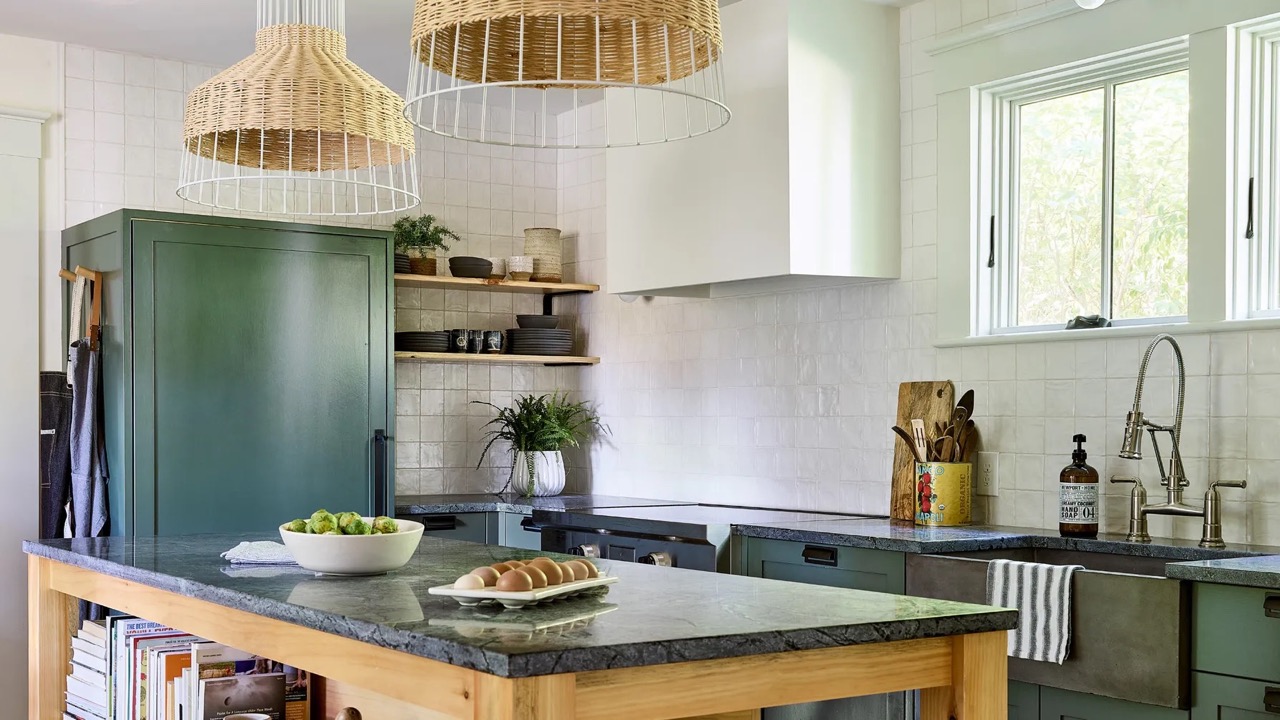
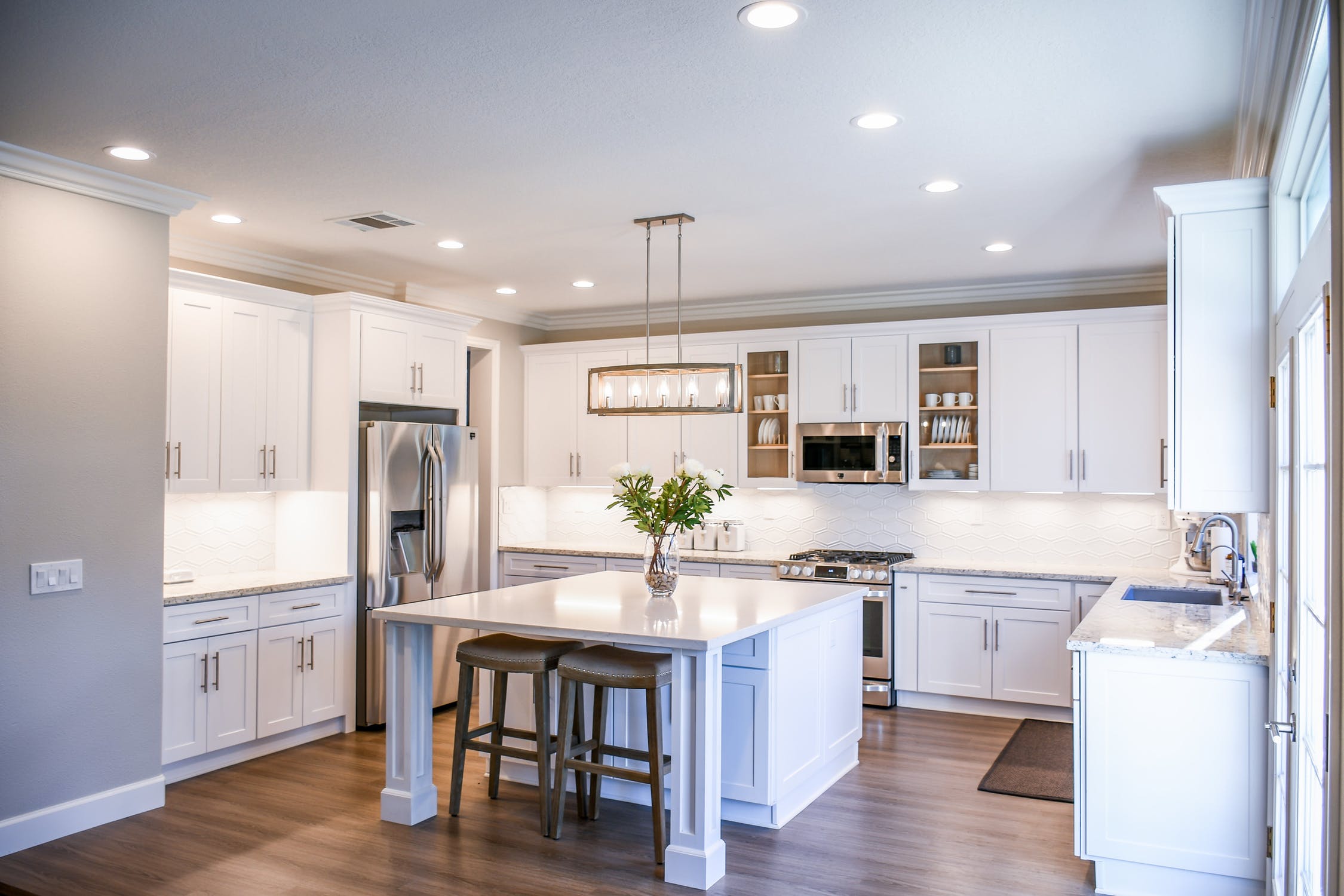
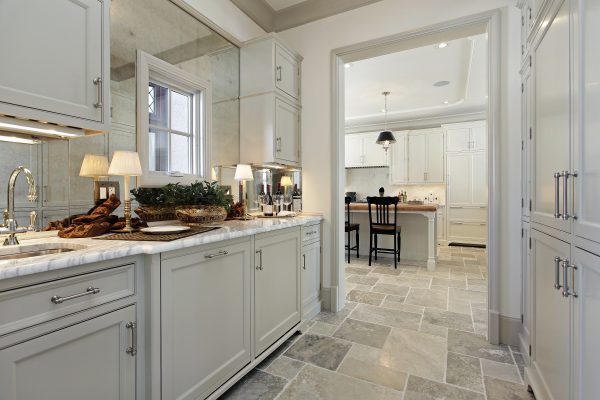
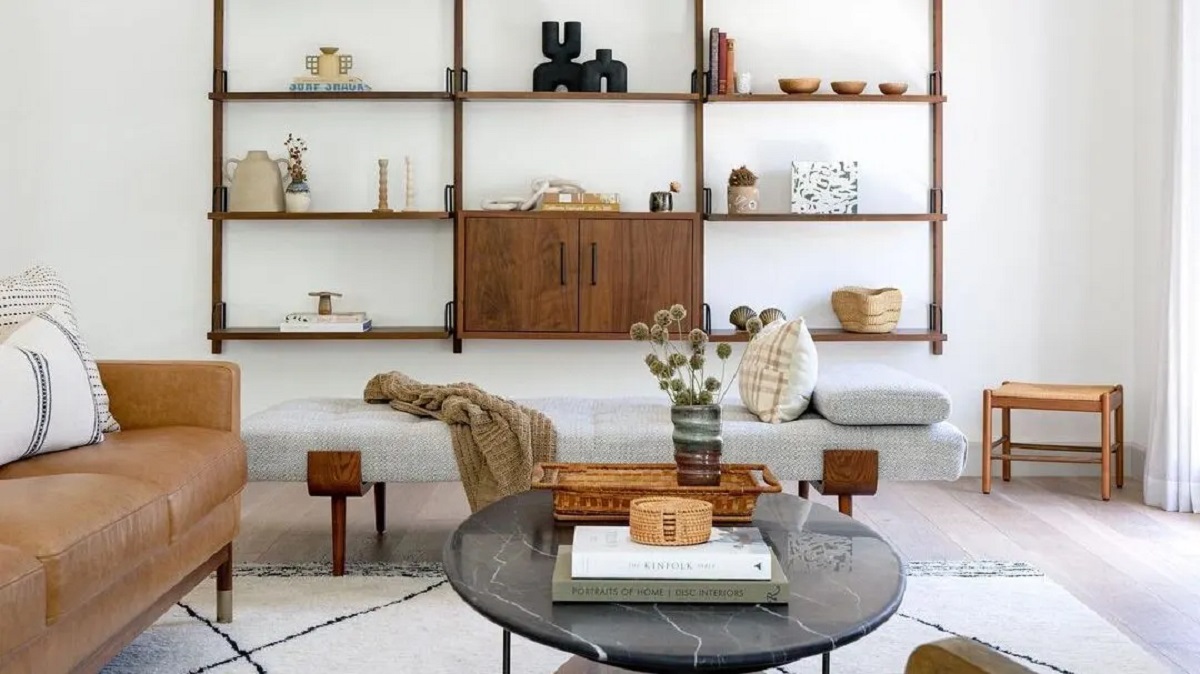
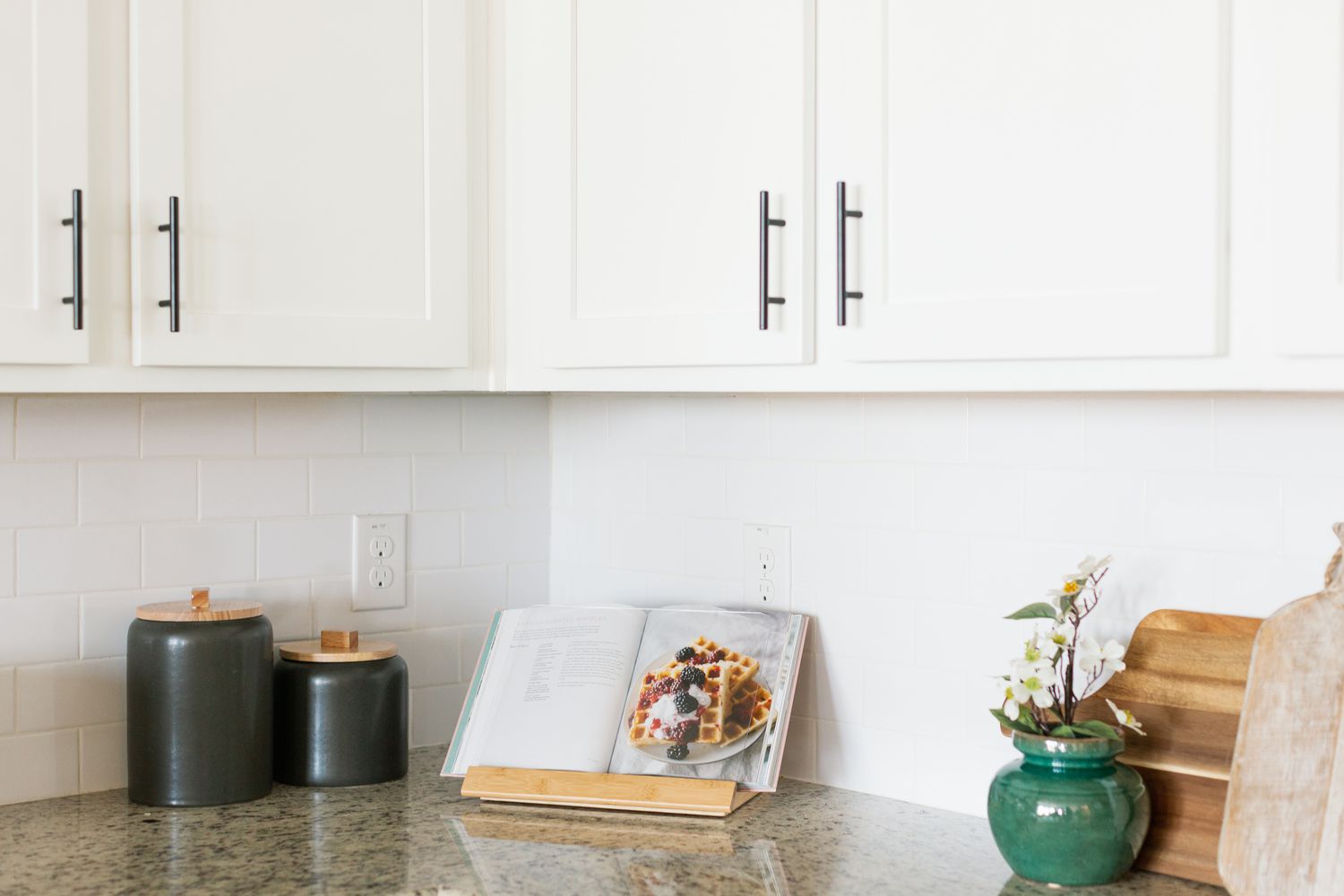

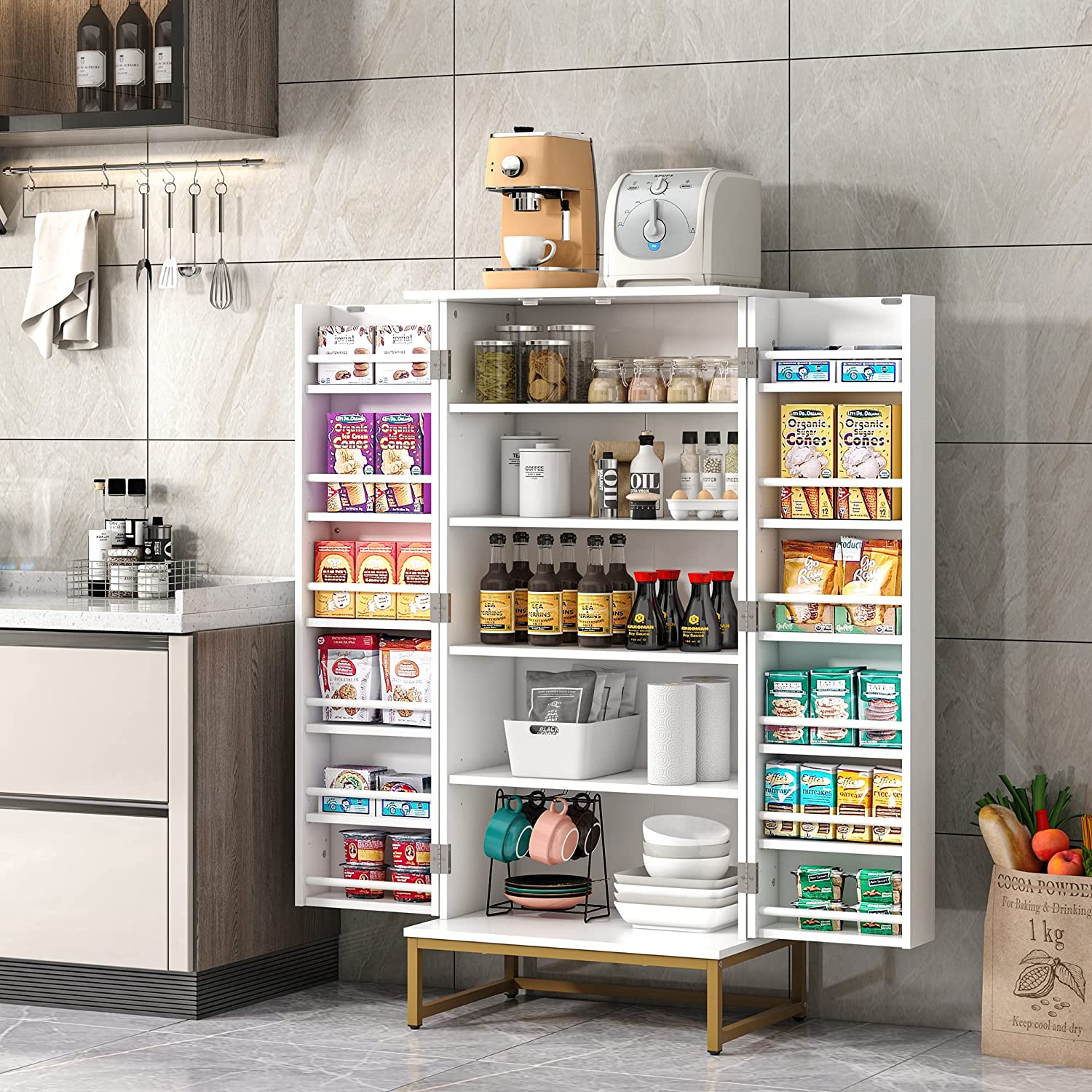

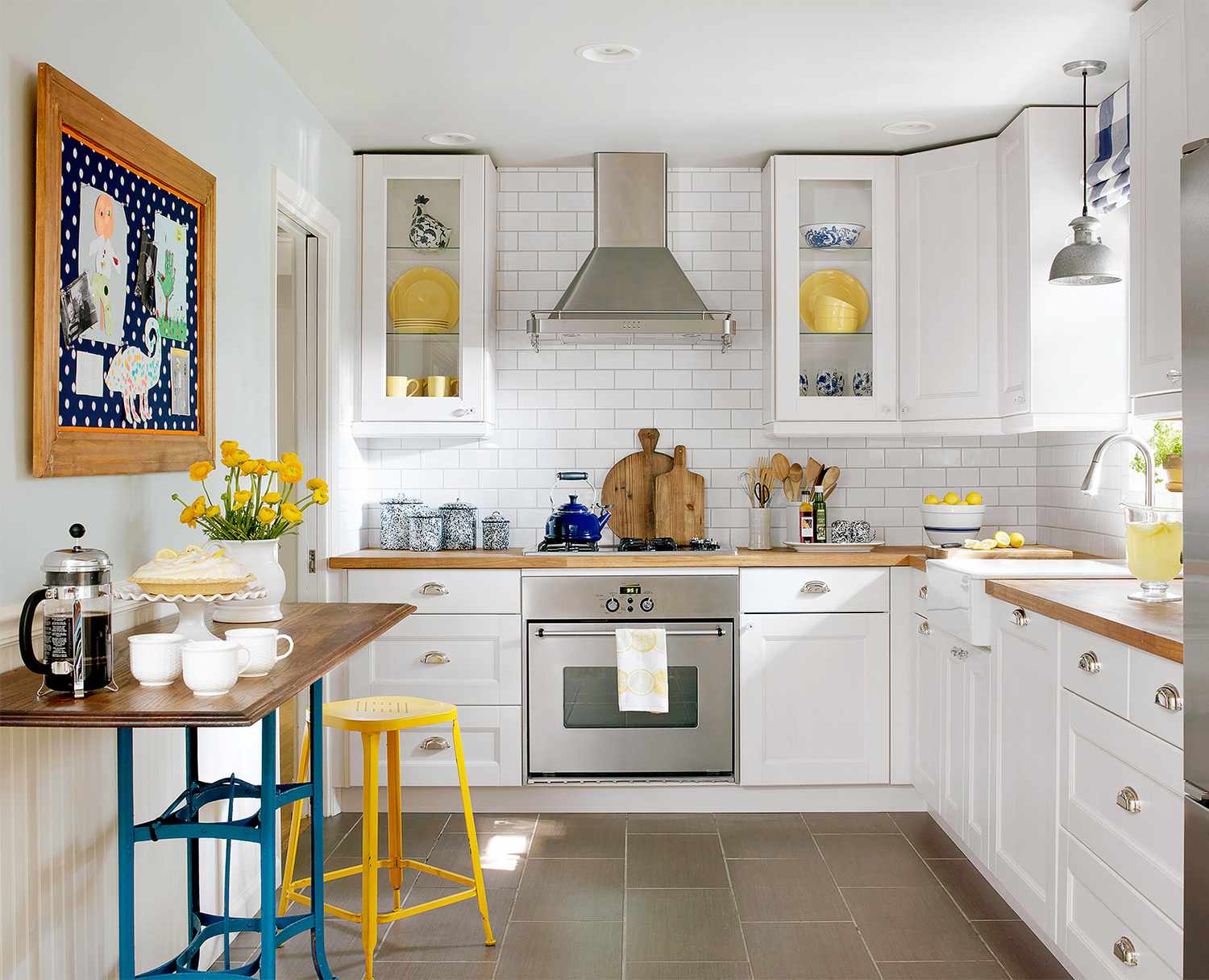




0 thoughts on “How To Make A Kitchen More Relaxing: 12 Designer Tips”